Introduction
When the holiday season arrives, one of the most iconic and vibrant plants takes center stage—the poinsettia. With its fiery red, festive green, and striking beauty, they have become synonymous with Christmas and add a touch of elegance to any home or celebration. We will dig into the intriguing world of poinsettias in this post, learning about its symbolism, history, and care needs. So, let’s unwrap the enchanting story of these colorful flowers.
Table of Contents
- Introduction
- 1. History of Poinsettias
- 2. Anatomy of a Poinsettia
- 3. Varieties of Poinsettia
- 4. Caring for Poinsettias
- 5. Poinsettias and Holiday Traditions
- 6. Symbolism and Cultural Significance
- 7. Poinsettias in Floral Arrangements
- 8. Poinsettia Festivals and Events
- 9. Poinsettias as Gifts
- 10. Common Myths Debunked
- 11. Pests and Diseases
- 12. Fun Facts About Poinsettias
- 13. Sustainable Practices in Poinsettia Cultivation
- 14. Poinsettias Beyond the Holiday Season
- 15. Conclusion
- FAQs (Frequently Asked Questions)
1. History of Poinsettias
The captivating story of poinsettias begins in Mexico, where they are native to the tropical highlands of Central America. These vibrant plants were highly regarded by the Aztecs, who called them “Cuetlaxochitl” and used their vibrant red bracts in various cultural practices. In the 1820s, the U.S. ambassador to Mexico, Joel Poinsett, discovered the plant and introduced it to the United States. Since then, it has been named after him and has become a beloved symbol of the holiday season.
2. Anatomy of a Poinsettia
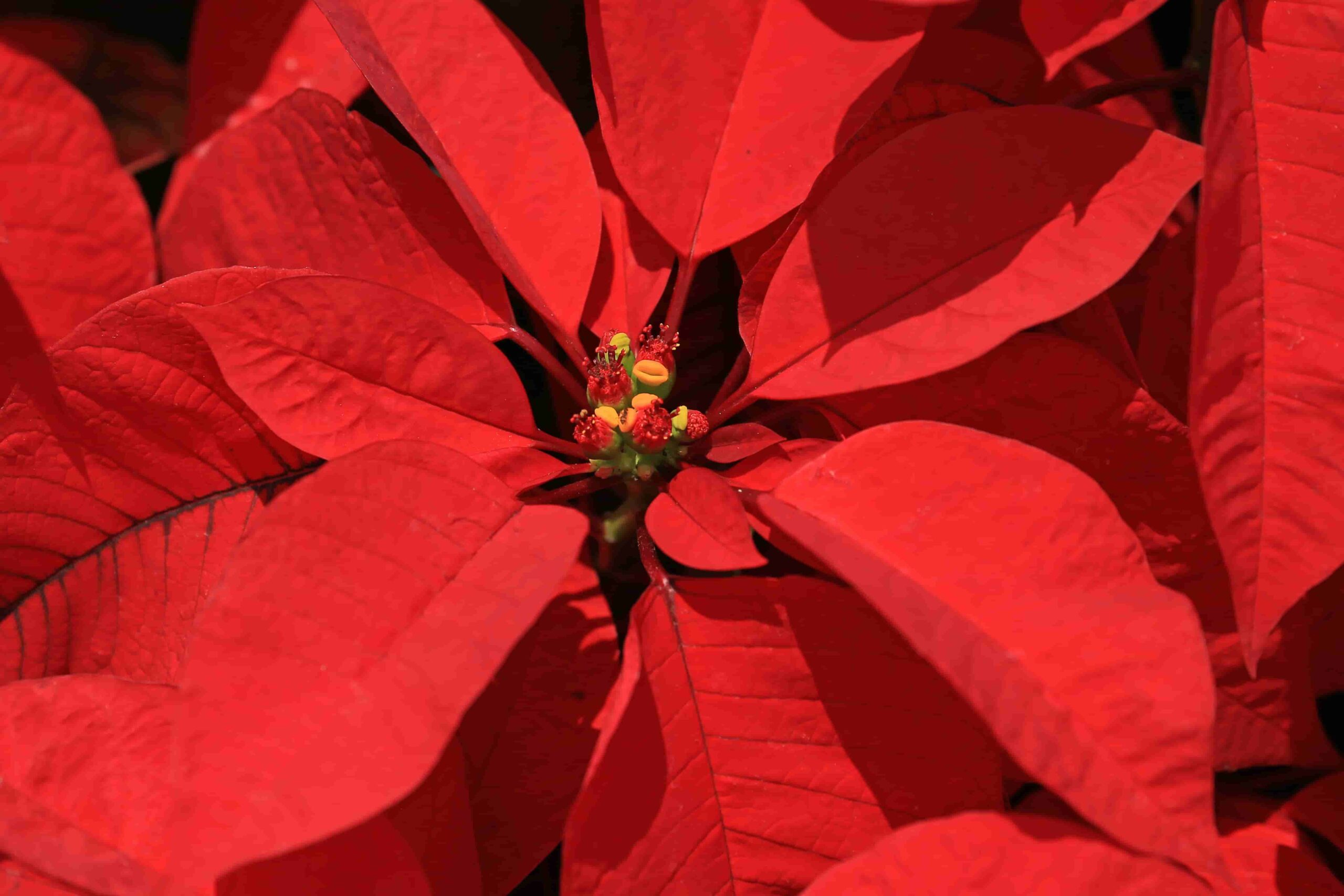
To appreciate the beauty of poinsettias, it’s important to understand their anatomy. The vibrant red parts that we commonly associate with poinsettias are not actually flowers but modified leaves called bracts. The true flowers, small and yellow, are nestled in the center of the bracts. These bracts come in various colors, including red, white, pink, and even bi-colored varieties.
3. Varieties of Poinsettia
Poinsettias offer a stunning array of colors and forms. Traditional varieties showcase bold red or snowy white bracts, while newer cultivars exhibit unique shades of pink, cream, and marbled patterns. Some popular cultivars include ‘Prestige Red,’ ‘Jingle Bells,’ and ‘Ice Punch.’ With advancements in breeding, poinsettia now come in diverse shapes, from compact to tree-like forms, allowing for versatile use in home decor and landscaping.
4. Caring for Poinsettias
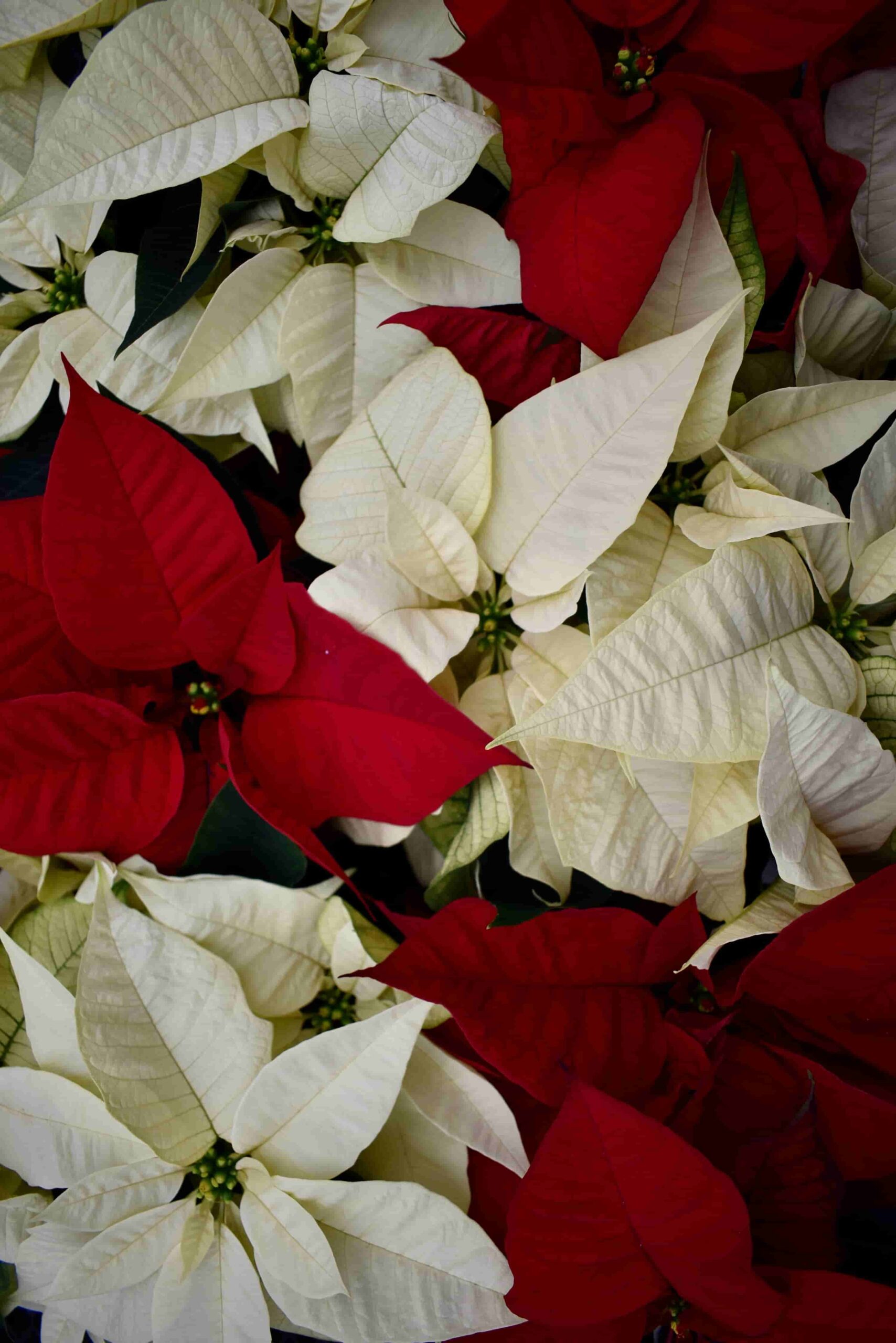
Proper maintenance is necessary to keep poinsettia plants looking their best throughout the Christmas season and beyond. These tropical plants grow best when kept out of drafts and in a warm, well-lit area. They should be irrigated when the top inch of the soil feels dry since they love slightly wet soil. Avoid giving the plant too much water or letting it stand in calm water. When given the proper care, poinsettia flowers may keep their vivid colors for several weeks.
5. Poinsettias and Holiday Traditions
Poinsettias have become a cherished part of holiday traditions around the world. In many homes, they adorn mantels, dining tables, and windowsills, adding a festive touch to the decor. Churches and public spaces also incorporate poinsettia plants into their displays, creating a warm and welcoming atmosphere. The enchanting beauty of poinsettia plants evokes the spirit of the season and brings joy to people of all ages.
6. Symbolism and Cultural Significance
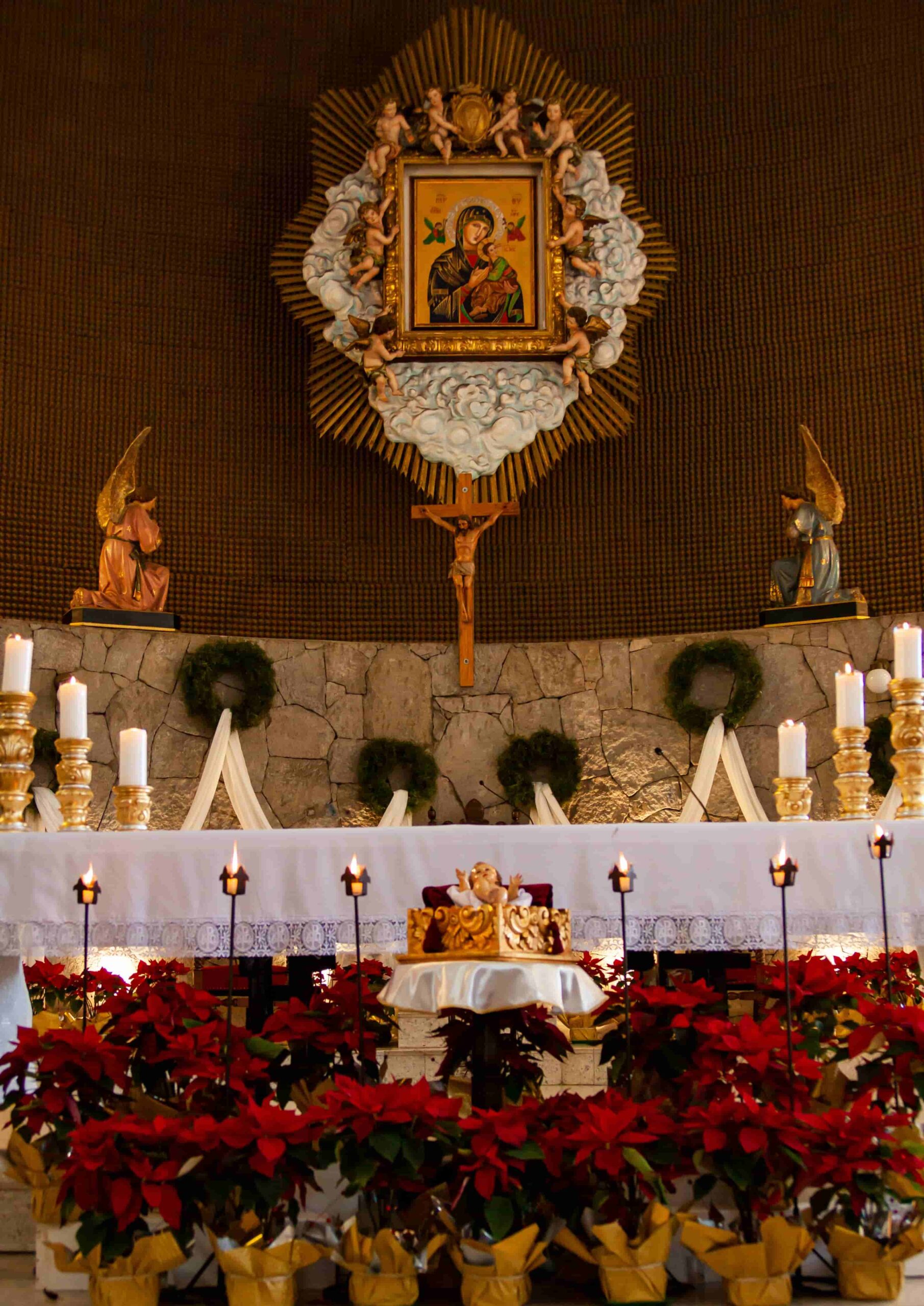
Beyond their aesthetic appeal, poinsettias hold deep symbolism in different cultures. In Christian traditions, the red color of poinsettia represents the blood of Christ, while the shape of the bracts is said to resemble the Star of Bethlehem. In Mexico, they are associated with the holiday season and are an integral part of the Christmas Eve festivities. Understanding the cultural significance of poinsettias adds another layer of appreciation for these remarkable plants.
7. Poinsettias in Floral Arrangements
Poinsettias are a well-liked option for flower arrangements because to their vivid colors and stunning look. They may be mixed with other flowers and foliage to make magnificent arrangements, from straightforward centerpieces to intricate bouquets. They offer a touch of elegance and exuberance to every occasion, and their adaptability encourages creativity in floral design.
8. Poinsettia Festivals and Events
In many regions, poinsettia festivals and events celebrate the beauty and cultural importance of these captivating plants. These festivals often feature elaborate displays of poinsettia plants, live music, art exhibitions, and educational workshops. Such events provide an opportunity for visitors to immerse themselves in the world of poinsettias and learn more about their history, care, and significance.
9. Poinsettias as Gifts
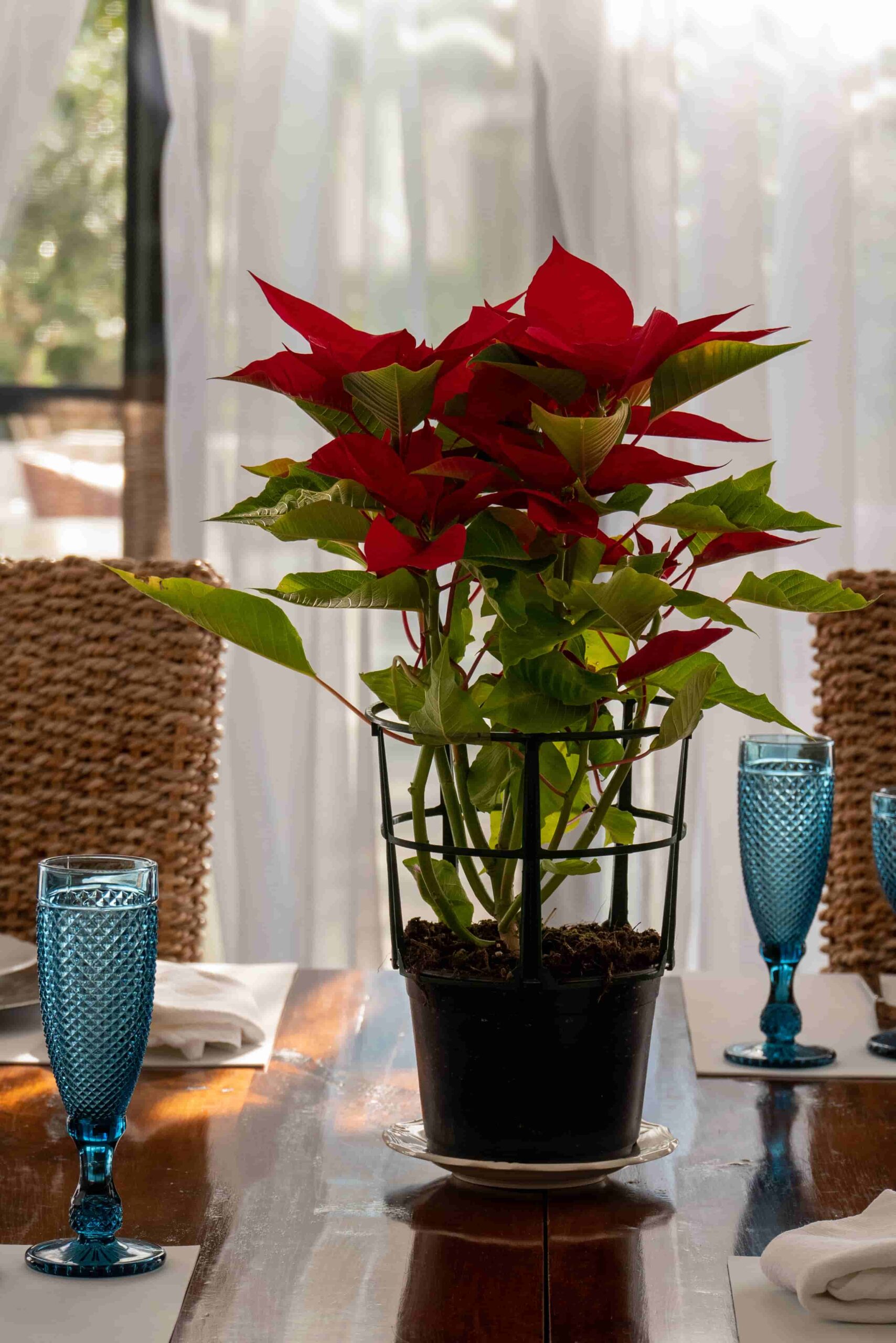
Poinsettias make wonderful gifts during the holiday season. Whether presented as a gesture of goodwill or as a symbol of love and friendship, these vibrant plants are sure to bring smiles to the faces of recipients. With their long-lasting beauty and meaningful symbolism, poinsettia plants convey warmth, joy, and the spirit of the season.
10. Common Myths Debunked
Over the years, several myths and misconceptions have surrounded poinsettia plants. One prevalent myth is that they are highly toxic to humans and pets. While it’s true that poinsettia plants can cause mild irritation if ingested in large quantities, they are generally safe when kept out of reach. Another myth suggests that these are annual plants, but with proper care, they can be encouraged to bloom again the following year. It’s important to dispel these myths to fully appreciate the beauty and value of poinsettias.
11. Pests and Diseases
Like any plant, poinsettias can be susceptible to pests and diseases. Common pests include whiteflies, aphids, and spider mites, which can be controlled through regular monitoring and appropriate treatments. Diseases such as root rot and powdery mildew can be prevented by providing proper drainage, avoiding overwatering, and ensuring good air circulation. By understanding these potential challenges, poinsettia enthusiasts can maintain healthy and vibrant plants.
12. Fun Facts About Poinsettias
- Poinsettia plants are not just limited to red; they come in various colors, including white, pink, and bi-colored varieties.
- The United States celebrates National Poinsettia Day on December 12th, honoring the death anniversary of Joel Poinsett.
- Poinsettias are not only used for decoration; their bracts can be used to create natural dyes.
- The Ecke family, one of the most prominent poinsettia growers, played a significantrole in popularizing the plant and developing new cultivars.
- In the US, poinsettia plants are the most popular potted plant.
- Mexico produces the majority of poinsettias plants sold worldwide.
13. Sustainable Practices in Poinsettia Cultivation
With growing environmental awareness, sustainable practices in poinsettia cultivation have gained prominence. Many growers now employ eco-friendly methods such as using biological pest control, minimizing water usage through efficient irrigation systems, and implementing recycling programs for plant waste. These practices help reduce the environmental impact and ensure the long-term sustainability of poinsettia cultivation.
14. Poinsettias Beyond the Holiday Season
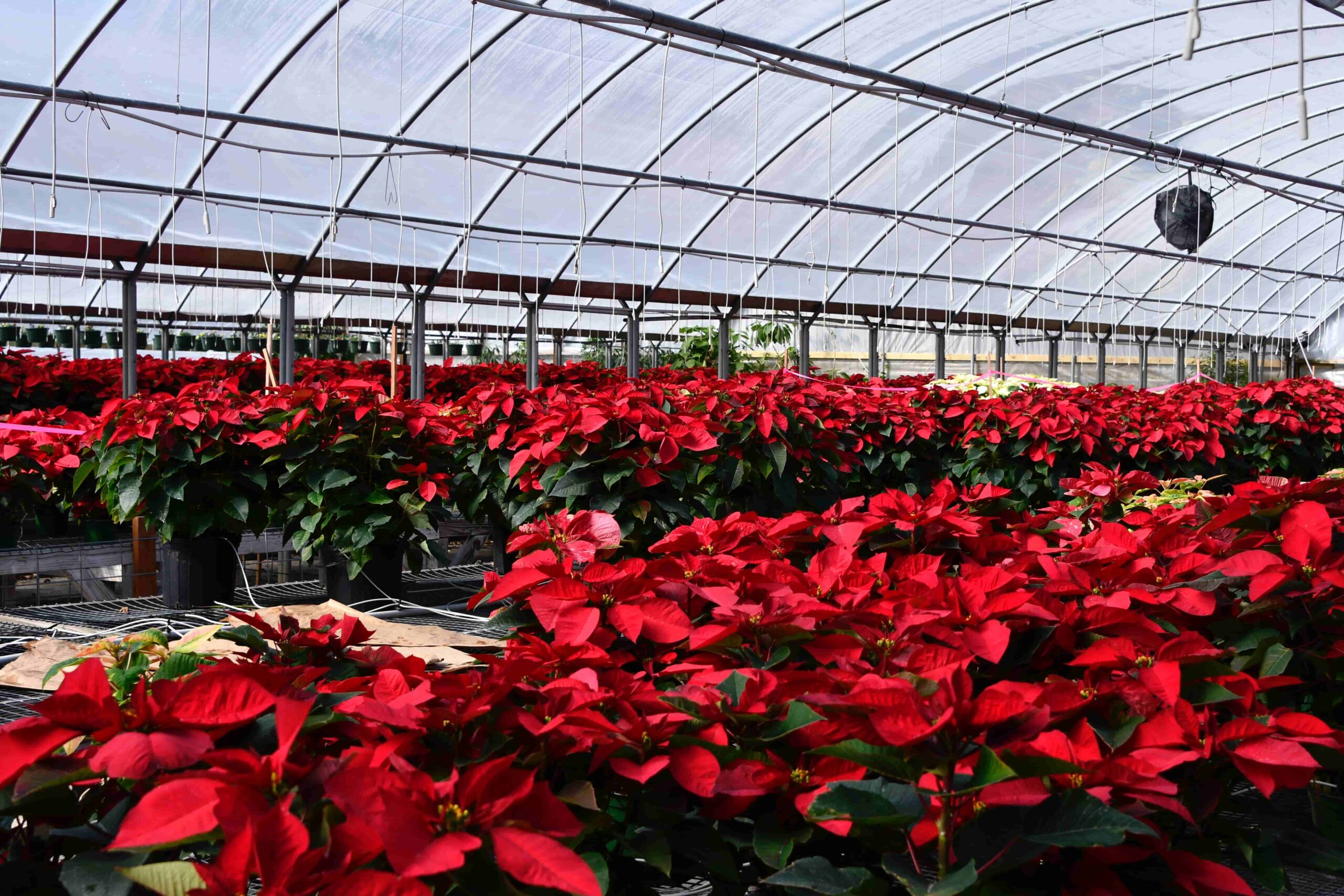
While poinsettias are most commonly associated with the holiday season, their beauty and versatility extend beyond Christmas. With proper care, poinsettia plants can be enjoyed throughout the year as attractive houseplants. By providing the right conditions and following appropriate pruning techniques, poinsettia plants can be encouraged to bloom again, brightening up homes and gardens with their vibrant colors.
15. Conclusion
Poinsettias have captured the hearts of people worldwide with their striking beauty and rich cultural significance. From their humble origins in Mexico to their prominent place in holiday traditions, these vibrant plants continue to enchant us year after year. By understanding their history, care requirements, and symbolism, we can fully appreciate the magic that poinsettia plants bring to the festive season and beyond.
In conclusion, poinsettias are not just ordinary plants; they are the vibrant stars that illuminate the holiday season. Their rich history, cultural significance, and captivating beauty make them an integral part of Christmas traditions. By caring for these remarkable plants and understanding their symbolism, we can add a touch of elegance and festive cheer to our homes. So, embrace the magic of poinsettias and let their vibrant colors brighten up your holiday celebrations and beyond.
FAQs (Frequently Asked Questions)
Are poinsettias poisonous?
While poinsettias can cause mild irritation if ingested in large quantities, they are generally not highly toxic to humans or pets.
How often should I water my poinsettia?
Water your poinsettia when the top inch of the soil feels dry. Avoid giving the plant too much water or letting it stand in calm water.
Will my poinsettia bloom again the following year?
With proper care and pruning techniques, poinsettias can be encouraged to bloom again in the following year.
What colors do poinsettias come in?
Poinsettias come in a variety of colors, including red, white, pink, and bi-colored varieties.
How long do poinsettias last?
With proper care, poinsettias can retain their vibrant colors for several weeks.

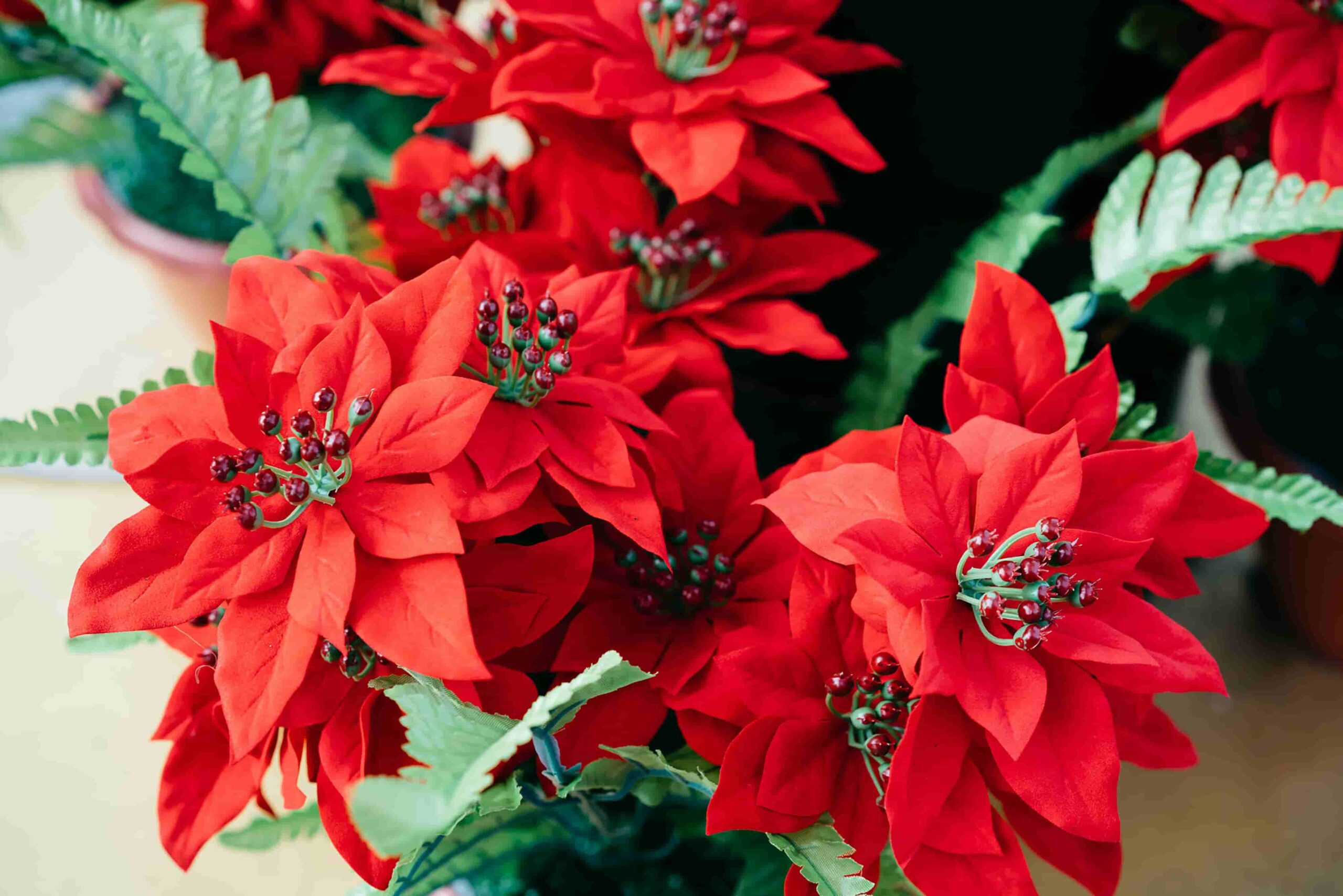
repudiandae repellat adipisci quia dolor commodi ea tenetur fuga. aut dolorum est quis vel temporibus dolor autem rerum et sit. temporibus qui laudantium perferendis architecto est sed aperiam fugiat
autem unde est esse omnis natus exercitationem omnis eum magnam vero id et sunt possimus maxime expedita nesciunt repudiandae. velit perferendis officiis sed quae quod consequuntur sapiente fugit corr